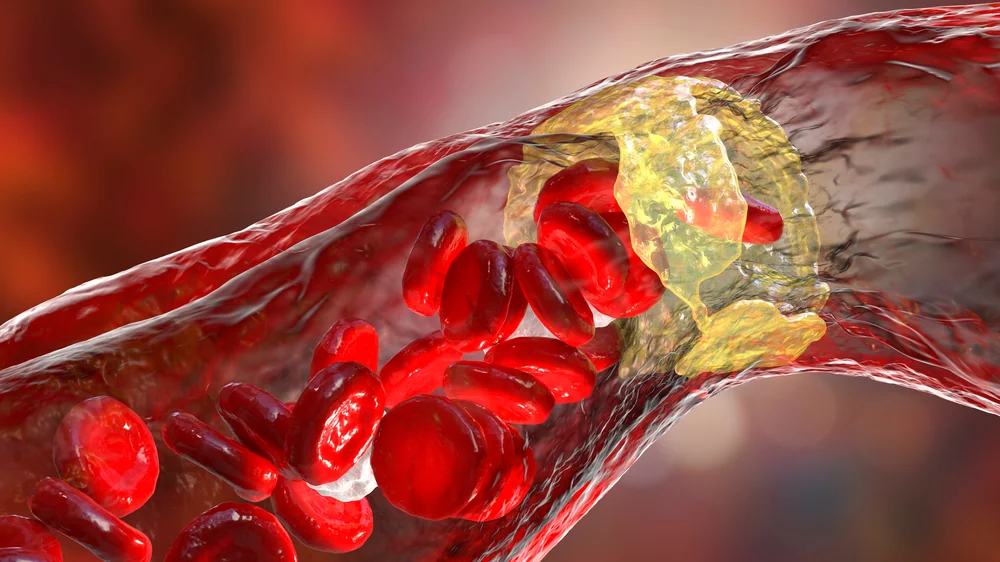Analyzing data from three clinical trials, scientists have shown that excessive inflammation is a much stronger predictor of cardiovascular and all-cause mortality in patients on statins than excessive LDL cholesterol levels. These findings can upend the current standard of care for such patients [1].
The two types of risk
Statins, drugs that lower the levels of low-density lipoprotein (LDL), aka “bad cholesterol”, are doing a great job in reducing cardiovascular mortality [2]. However, in some people, LDL levels remain higher than the norm despite statin therapy, which elevates cardiovascular risk. Patients on statins are also more vulnerable if their inflammation levels are high. The former condition is known as residual cholesterol risk (RCR), and the latter as residual inflammatory risk (RIR) [3].
What was not known until now is each one’s exact contribution to mortality, which can be crucial in a choice of adjunctive cardiovascular therapy. According to a new paper published in the Lancet, RIR is the much more important factor.
Three different trials
The researchers analyzed data from three statin clinical trials – PROMINENT, REDUCE-IT, and STRENGTH. Participants were divided into four groups – those with neither RCR nor RIR, those with RCR only, those with RIR only, and those with both. This analysis was adjusted for multiple potential confounders, including age, gender, smoking status, BMI, blood pressure, and previous history of cardiovascular disease.
Blood levels of LDL-cholesterol and high-sensitivity C-reactive protein (hs-CRP), a measure of inflammation, were grouped into quartiles, with quartile limits being largely similar across all three studies. One of the studies included only people with diabetes, while in two others, diabetes patients constituted a majority. The mean BMI of all three studies’ participants was about 32.
CRP is the key
In all three trials, baseline CRP proved to be a significant predictor of mortality. The average fully adjusted hazard ratio for the highest vs the lowest CRP quartile was 1.31 for major cardiovascular events, 2.68 for cardiovascular mortality, and 2.42 for all-cause mortality. A hazard ratio measures how much more likely an event is to happen; an HR of 2.68 indicates an almost three-fold increase in likelihood.
The contribution of higher LDL cholesterol was much more modest. In combined data, it was statistically significant only for cardiovascular mortality (HR = 1.27) and all-cause mortality (HR = 1.16) at the highest quartile. Conversely, for CRP, the combined trial data was highly significant in all scenarios, except for cardiovascular events for the second quartile.
The danger of inflammation
According to Paul Ridker, MD, a preventive cardiologist at Brigham and Women’s Hospital and the study’s corresponding author, “the new data should be a wake-up call for preventive cardiologists and their patients.”
“Virtually all patients with or at risk for atherosclerotic disease are appropriately treated with aggressive statin therapy”, Ridker said. “Yet, in our study of patients already taking a statin, hsCRP – a measure of residual inflammatory risk – was a more powerful determinant of having a future heart attack or dying from cardiovascular disease than was LDL – cholesterol – a measure of residual cholesterol risk. The data are a powerful demonstration that to beat heart disease, we need to lower both cholesterol and inflammation, not just cholesterol alone.”
While several clinical trials have found that inhibiting inflammation reduces cardiovascular risks, the uptake of anti-inflammatory therapy in daily practice has been slow. One particular anti-inflammatory drug the paper mentions is colchicine. Although two large, randomized trials showed that colchicine reduces cardiovascular event rates at least on par with much more expensive cholesterol-lowering medications [4], it is still not widely used in this context.
Conclusion
This study constitutes an important addition to previous research that has highlighted inflammation as a major factor in atherosclerosis. The results strongly suggest that in high-risk patients who already receive statin therapy, cardiologists should strive to reduce excessive inflammation as opposed to excessive LDL levels. Apart from the obvious implications for the current standard of care in atherosclerosis, the study also adds to our growing understanding of how inflammation impacts various aspects of aging.
Literature
[1] Ridker, P. M., Bhatt, D. L., Pradhan, A. D., Glynn, R. J., MacFadyen, J. G., & Nissen, S. E. (2023). Inflammation and cholesterol as predictors of cardiovascular events among patients receiving statin therapy: a collaborative analysis of three randomised trials. The Lancet.
[2] Bots, S. H., Onland-Moret, N. C., Jancev, M., Hollander, M., Tulevski, I. I., Hofstra, L., … & den Ruijter, H. M. (2022). Statins are associated with a large reduction in all-cause mortality in women from a cardiac outpatient population. Open Heart, 9(1), e001900.
[3] Kalkman, D. N., Aquino, M., Claessen, B. E., Baber, U., Guedeney, P., Sorrentino, S., … & Mehran, R. (2018). Residual inflammatory risk and the impact on clinical outcomes in patients after percutaneous coronary interventions. European heart journal, 39(46), 4101-4108.
[4] Fiolet, A. T., Opstal, T. S., Mosterd, A., Eikelboom, J. W., Jolly, S. S., Keech, A. C., … & Cornel, J. H. (2021). Efficacy and safety of low-dose colchicine in patients with coronary disease: a systematic review and meta-analysis of randomized trials. European heart journal, 42(28), 2765-2775.




